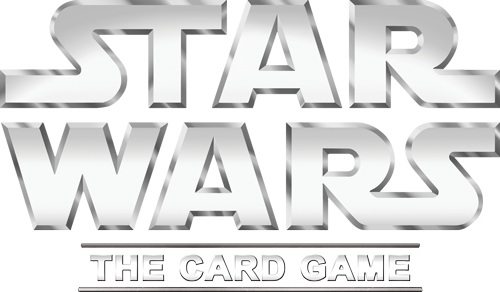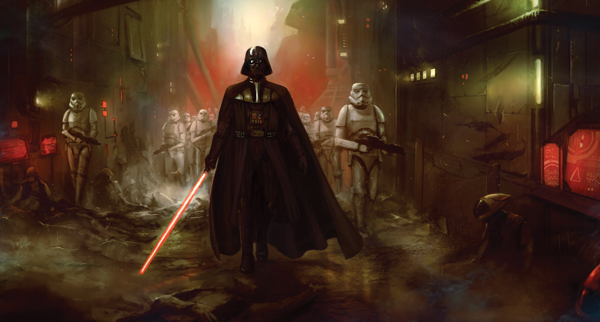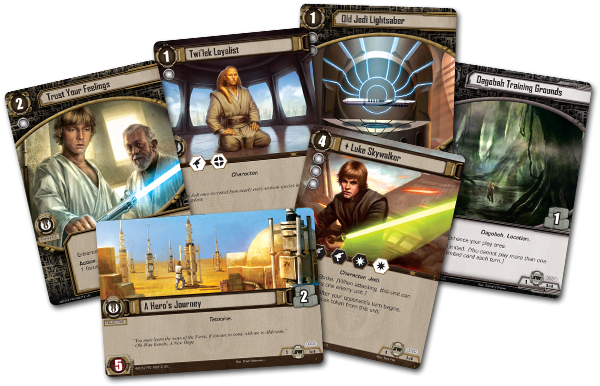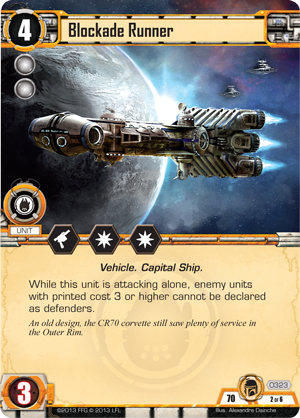
Vital Intelligence
A Guest Article on Information in STAR WARS (TM): The Card Game

“Many Bothans died to bring us this information.”
–Mon Mothma, Star Wars: Return of the Jedi
In any card game, information about your opponent’s plans and tactics is key. Star Wars™: The Card Game is no different. If you can successfully divine the contents of your opponent’s hand and deck, you’ll have a significant advantage in the game. Star Wars: The Card Game uses an objective set system, where deck are built from sets of six cards. This system helps reveal your opponent’s deck, but you’ll need to know how to take advantage of it.
Today, guest writer Matt Brown, a frequent contributor and active member in the Star Wars: The Card Game community, writes on how to ensure that you get the most information out of what your opponent plays. Find out more below!

Guest Writer Matt Brown on Information in Star Wars: The Card Game
Like many other card games, Star Wars: The Card Game forces you to make decisions with incomplete information. The player who gathers and utilizes more information always has an edge over their opponent in making the best tactical decision at that moment. Learning to utilize all available information in Star Wars translates into more wins.
In general, there are two kinds of information: known information and hidden information. The known information at any point in the game is extensive. You know the cards on the table, the cards in each discard pile, the cards in your hand, the number of cards in your opponent’s hand, the resources available to each player, and the current progress each player has made towards his win condition. This is all important information and needs to be considered, but it doesn’t bring you much of an advantage since your opponent has access to the same information. Hidden information includes the contents of your opponent’s hand and the contents of their command deck and objective deck. Finding ways to change hidden information into known information sets you up to outmaneuver your opponent and turn the tide of the game.
Reading the Signs
The quickest way to gain information about your opponent’s hand and deck is to take advantage of what the objective set system tells you. Because Star Wars: The Card Game uses deckbuilding with pods of six cards (one objective and five other cards), as soon as your opponent’s starting objectives flip over, you know fifteen out of fifty cards in his command deck. If he discards something during his draw phase, there’s a good chance he just told you four other command deck cards and another objective. Every card your opponent plays potentially tells you five more cards you could see during the game. Taking full advantage of the system requires some work on your part though. If you don’t know the objective sets, you might not realize that seeing the Darth Vader (Core Set, 35) means that you have to worry about Heat of Battle (Core Set, 169) and Force Choke (Core Set, 59). If it means that you need to make some objective set flashcards, do it! You can start out by focusing on sets that have powerful “surprise” cards like Bamboozle (Edge of Darkness, 334), Jedi Mind Trick (Core Set, 65), Force Lightning (Core Set, 60), or fate cards for the quickest results, but your goal should eventually be to know every objective set.

Knowing the cards in an objective set can give you an advantage over your opponent.
You should also keep in mind what information you give your opponent when you play cards. Say you have two copies of Dagobah Training Grounds (Core Set, 31) in your hand, one from A Hero’s Journey (Core Set, 2) and one from In You Must Go (Core Set, 76). If you have In You Must Go shown as one of your objectives, play the Dagobah Training Grounds that matches the objective. Your opponent gets no new information, leaving them unsure if they’ll see power cards like Luke Skywalker (Core Set, 92) or Trust Your Feelings (Core Set, 153) later in the game. The more you know about your opponent’s cards and the more you keep secret about your own deck, your advantage in interpreting known information will be greater and your decisions will be better.
The Force Will Guide You
 Once you’ve mastered the basics of taking advantage of objective sets, there are some advanced techniques you can use to fill more gaps. First, be aware of the meta-game to help anticipate objective sets you haven’t seen in your opponent’s deck. For example, at the 2013 Star Wars: The Card Game World Championships, a common deck type revolved around the “unblockable” Sleuth Scouts (Edge of Darkness, 340) and Blockade Runner (Edge of Darkness, 323), with The Defense of Yavin 4 (Core Set, 138) usually included to help get Vehicles out faster. So, if you saw your opponent with the Rebel Alliance affiliation and Across the Anoat Sector (Edge of Darkness, 339) as one of their objectives, you could safely assume that their deck had two copies of Across the Anoat Sector, two copies of The Defense of Yavin 4, and likely two copies of Raise the Stakes (Edge of Darkness, 322). You would have this information not because of anything your opponent did, but because you knew common deck types. Taking this a step further, if you saw a Rebel Alliance affiliation while you were choosing objectives and deciding whether or not to mulligan your hand, you might assume you’d be facing Sleuth Scouts and make your choices accordingly.
Once you’ve mastered the basics of taking advantage of objective sets, there are some advanced techniques you can use to fill more gaps. First, be aware of the meta-game to help anticipate objective sets you haven’t seen in your opponent’s deck. For example, at the 2013 Star Wars: The Card Game World Championships, a common deck type revolved around the “unblockable” Sleuth Scouts (Edge of Darkness, 340) and Blockade Runner (Edge of Darkness, 323), with The Defense of Yavin 4 (Core Set, 138) usually included to help get Vehicles out faster. So, if you saw your opponent with the Rebel Alliance affiliation and Across the Anoat Sector (Edge of Darkness, 339) as one of their objectives, you could safely assume that their deck had two copies of Across the Anoat Sector, two copies of The Defense of Yavin 4, and likely two copies of Raise the Stakes (Edge of Darkness, 322). You would have this information not because of anything your opponent did, but because you knew common deck types. Taking this a step further, if you saw a Rebel Alliance affiliation while you were choosing objectives and deciding whether or not to mulligan your hand, you might assume you’d be facing Sleuth Scouts and make your choices accordingly.
Knowing common decks can also give you extra information when you see the decisions your opponent makes. For instance, if your opponent starts The Emperor’s Web (Core Set, 105) as one of their three objectives, you can usually assume they have two copies in their deck and drew both of them, since The Emperor’s Web’s low damage capacity makes it an unpopular choice for a starting objective. Sometimes these extrapolations are incorrect and you’ll revise your mental picture of their deck as the game progresses, but if you know the meta and common combinations, you’ll find your early deductions are correct more often than not.
Once you have a good feel for what cards you can expect from your opponent, you can start anticipating your opponent’s next move and plan accordingly. Take what you know about their deck and put yourself in their seat for a moment. If you were them, what would you want to happen next? What would you be afraid of happening? Use that knowledge to play proactively, putting your opponent into bad situations instead of reacting to their moves. Each time you gain an advantage in the moment, you come closer to final victory.
Thanks, Matt!
Now that you know how to gather the information you need from your opponent’s deck, you’ll need to make the most of it in your games of Star Wars: The Card Game. Look for more guest articles from Matt and others in coming weeks!
…
